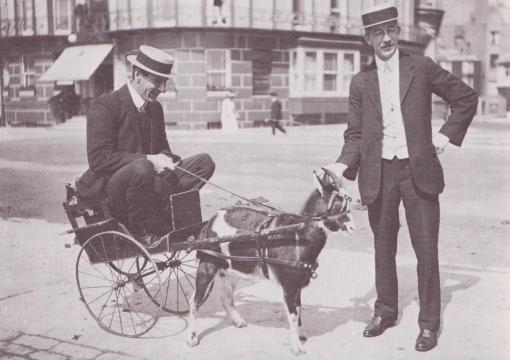Openers rarely use nightwatchmen. When Rangana Herath opened instead of Tharanga Paranavitana for Sri Lanka against Pakistan at Galle in July 2009, it was the first time a nightwatchman had protected an opener since Deryck Murray went in for Seymour Nurse against England in Jamaica in February 1968. Mike Brearley gave an explanation.
“It is almost unheard of for a nightwatchman to go in to protect an opener, even if there is time for only one over, which one nightwatchman could arrange to face. I suppose openers regard it as part of the job; perhaps they are felt to be happier going in at once than having to wait in the dressing room with pads on.”
Mike Brearley, “The Art of Captaincy” Hodder & Stoughton, 1985
Yet before 1929 about a third of nightwatchmen used in Test matches protected openers. Indeed, the first nightwatchman considered to have made a match-winning contribution, Australia’s Bert Oldfield, opened his side’s innings. Australian captain, and opener, Mark Taylor might have enjoyed those old days.
“Unlike all other specialist batsmen, openers are never offered a night watchman … I’ve never been quite able to work that out … Nine times out of ten when I have asked [as captain] guys if they want a night watchman, the answer has been ‘yes’. If batsmen other than openers can avoid batting for three overs late in the afternoon, they’ll do it. But whenever the answer to that question has been ‘yes’, I always get a dig in: ‘How come you get one and I don’t?’ … an opener might be the best batsman yet he never gets the gesture of protection offered to the others.”
Mark Taylor, “Time to Declare” MacMillan, 1999
The only other opening nightwatchman considered by his peers to have played a decisive innings was Jimmy Binks who landed the job when England were suffering in India. Rarer still are captains going in as nightwatchmen: leadership, after all, must have its privileges – choosing someone else to sacrifice rather than climbing onto the altar oneself being one of them. Nevertheless, both times a Test captain has decided to do the job himself, a match-winning contribution resulted. Daniel Vettori was one of them (and is also one of the seven frequently successful nightwatchman who have made two decisive contributions).
Daniel Vettori (click on the name to read)
Of the other – West Indies’ Gerry Alexander – there were many who felt he should not have been leading from the front at all. The stories of Oldfield, Binks and Alexander are here.
NWM_Leading_from_front (click here to read)
All three were wicket-keepers. Four wicketkeepers, as noted before, have had six or more successful stints as a nightwatchman. A summary of these frequently successful nightwatchmen are shown in the next table. The number of match-winning or match-saving contributions they have made, according to contemporary judgement, is shown in the column labelled “Decisive”.

The first three of these have their own files – the one for Saleem Yousuf completes the set.
Saleem Yousuf (click on the name to read)
Hanson “Sammy” Carter was born in Halifax. When he was a young boy his family emigrated to a suburb of Sydney, and Sammy went on to play for New South Wales and 28 Tests for Australia. When England crashed at Headingley in 1921 to her eighth successive Ashes defeat (all of them sound thrashings) since the war, the press ravaged the county system, damned the reliance on titled amateurs and lamented the fact that Sammy was the only Yorkshireman to have played in the match. Carter was the first wicketkeeper to crouch behind the stumps and the first Australian Test player to arrive in England by plane.
“An aeroplane is one thing; this beast is another. I’ll hold him ‘til you’re ready.”
Hanson Carter leaves the risks to a team-mate in Hastings.
Apart from those already covered, the other match-winning or match-saving contributions made by wicketkeepers are listed below:
1. George Duckworth (Eng), 33, England v Australia, Headingley 1930
“He [Duckworth] helped Hammond to add 83 runs in a partnership which had clearly saved England from any chance of being beaten. It was a truly great innings, a model both for courage and technique to many more illustrious batsmen” (Times)
2. Ben Barnett (Aus), 57, England v Australia, Headingley 1938
“A careful innings in support of Bradman helped Australia win the Headingley Test and retain the Ashes” (Wisden Cricket Monthly). “[Barnett] batted magnificently, showing fine defence and making the most of anything loose” (Charlie Macartney)
3. Alan Knott (Eng), 73, Australia v England, Brisbane 1970
“An extremely valuable innings tactically and strategically for it may mean later on England can experiment with increased bowling strength without imperilling the batting unduly.” (Guardian) [Knott’s NWM innings helped save the First Test: playing an extra bowler in the subsequent Tests turned the series England’s way].
4. Wasim Bari (Pak), 85, Pakistan v India, Lahore 1978
“A fine innings by Bari set the pattern for subsequent domination”: (The Cricketer International). [Wasim played a] “most responsible innings like a dependable middle order bat” (Karachi Dawn)
5. Bob Taylor (Eng), 31, Australia v England, Perth 1982
“Defeat [was] a strong possibility, but it receded as Taylor, ostensibly the nightwatchman stayed on into the heat of the day” (Guardian). “Australia’s hopes of victory declined on the final morning when they were unable to dismiss Taylor” (Wisden).
6. Ian Healy (Aus), 69, Australia v England, Sydney 1991
“England looked like winning: two Queenslanders [Healy and Rackemann] stopped them.” (David Frith) “A courageous and sensible 69, his best Test score, prevented a complete collapse” (Sydney Morning Herald)
